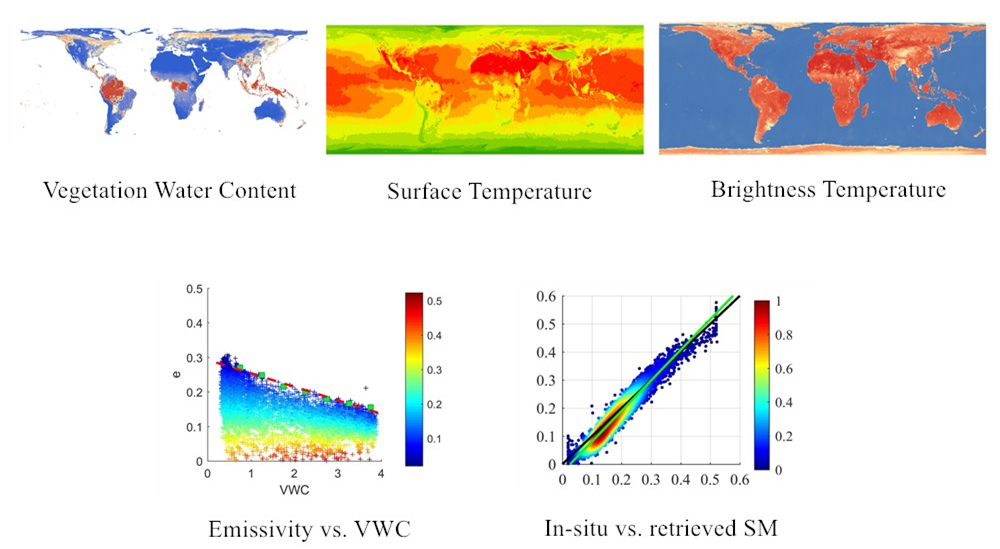Water in the soil layer, accounting for 0.05% of fresh water resources, maintains the growth of global vegetation. The dynamic of soil moisture caused by climate change will trigger the fluctuation of gross primary productivity (GPP) in terrestrial ecosystem, as well as the circulation rate of energy and water at the earth-atmosphere interface.
Soil moisture (SM) mapping at global scale mainly depends on satellite remote sensing technology, especially microwave remote sensing technology due to its sensitivity to SM. Current SMalgorithms based on remote sensing are mostly derived from physical process models, which requires a lot of input parameters related with soil and vegetation properties. The difficulty and uncertainty in achieving them may hinder the generation of soil moisture products.
Associate Professor ZHENG Xingming and his team from Northeast Institute of Geography and Agroecology of the Chinese Academy of Sciences and the Changchun Jingyuetan Remote Sensing Test Site of CAS, explored the linear relationship between vegetation water content and soil surface emissivity of L-band.
A new soil moisture algorithm based on the change detection principle was proposed for farmland surfaces. The reliability of the algorithm was evaluated by in situ data collected by the Wireless Sensor Network (WSN) and satellite-based soil moisture products, showing encouraging results in terms of accuracy and dynamic range.

Flow chart of the new soil moisture algorithm and comparison of in-situ and retrieved soil moisture (Image by LI Bingze)
This work means the emergence of a new and simple algorithm for mapping global soil moisture. In the future, they will extend the algorithm to different climatic regions and different vegetation types, completely change the mapping process of soil moisture, and serve the global drought monitoring and hydrological prediction.
The research paper titled " A New Soil Moisture Retrieval Algorithm from the L-Band Passive Microwave Brightness Temperature Based on the Change Detection Principle " was published in the journal of Remote Sensing .
The study was supported by the National Natural Science Foundation of China.
Contact:
ZHENG Xingming
Northeast Institute of Geography and Agroecology
E-mail: zhengxingming@iga.ac.cn